By Chending

A simple business logic: You can obtain the response data by calling an interface provided by other backend services.
Reverse geographic interface: You can obtain the county, district, city, and province as well as the response code that the longitude and latitude represent through the longitude and latitude:
curl-i"http://xxx?latitude=31.08966221524924&channel=amap7a&near=false&longitude=105.13990312814713"
{"adcode":"510722"}Execution at the server with the simplest synchronous call method:

Before the server responds, the Input/Output (IO) is blocked on the native method of java.net.SocketInputStream#socketRead0:

Through the jstack log, you can find that the Thread remains in the runnable state:
"main"#1 prio=5 os_prio=31 tid=0x00007fed0c810000 nid=0x1003 runnable [0x000070000ce14000] java.lang.Thread.State: RUNNABLE
at java.net.SocketInputStream.socketRead0(Native Method)
at java.net.SocketInputStream.socketRead(SocketInputStream.java:116)
at java.net.SocketInputStream.read(SocketInputStream.java:171)
at java.net.SocketInputStream.read(SocketInputStream.java:141)
at org.apache.http.impl.conn.LoggingInputStream.read(LoggingInputStream.java:84)
at org.apache.http.impl.io.SessionInputBufferImpl.streamRead(SessionInputBufferImpl.java:137)
at org.apache.http.impl.io.SessionInputBufferImpl.fillBuffer(SessionInputBufferImpl.java:153)
at org.apache.http.impl.io.SessionInputBufferImpl.readLine(SessionInputBufferImpl.java:282)
at org.apache.http.impl.conn.DefaultHttpResponseParser.parseHead(DefaultHttpResponseParser.java:138)
at org.apache.http.impl.conn.DefaultHttpResponseParser.parseHead(DefaultHttpResponseParser.java:56)
at org.apache.http.impl.io.AbstractMessageParser.parse(AbstractMessageParser.java:259)
at org.apache.http.impl.DefaultBHttpClientConnection.receiveResponseHeader(DefaultBHttpClientConnection.java:163)
at org.apache.http.impl.conn.CPoolProxy.receiveResponseHeader(CPoolProxy.java:165)
at org.apache.http.protocol.HttpRequestExecutor.doReceiveResponse(HttpRequestExecutor.java:273)
at org.apache.http.protocol.HttpRequestExecutor.execute(HttpRequestExecutor.java:125)
at org.apache.http.impl.execchain.MainClientExec.execute(MainClientExec.java:272)
at org.apache.http.impl.execchain.ProtocolExec.execute(ProtocolExec.java:185)
at org.apache.http.impl.execchain.RetryExec.execute(RetryExec.java:89)
at org.apache.http.impl.execchain.RedirectExec.execute(RedirectExec.java:110)
at org.apache.http.impl.client.InternalHttpClient.doExecute(InternalHttpClient.java:185)
at org.apache.http.impl.client.CloseableHttpClient.execute(CloseableHttpClient.java:83)
at org.apache.http.impl.client.CloseableHttpClient.execute(CloseableHttpClient.java:108)
at com.amap.aos.async.AsyncIO.blockingIO(AsyncIO.java:207)
.......Thread model:
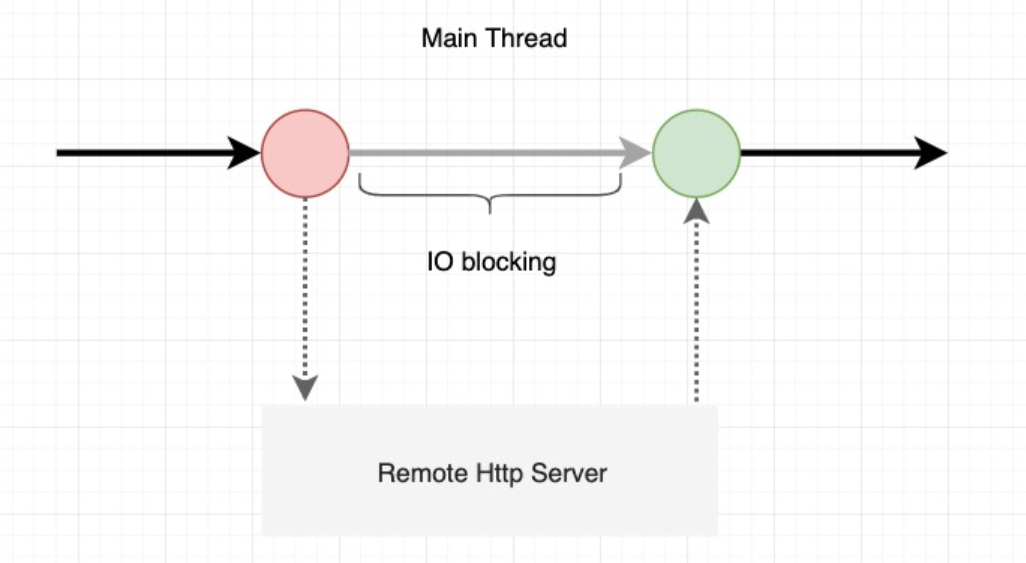
The biggest problem of synchronization is that thread resources are not utilized fully when waiting for IO responses, resulting in limited business throughput in a large number of IO scenarios.
In JDK 1.5, JUC provides the Future abstraction:

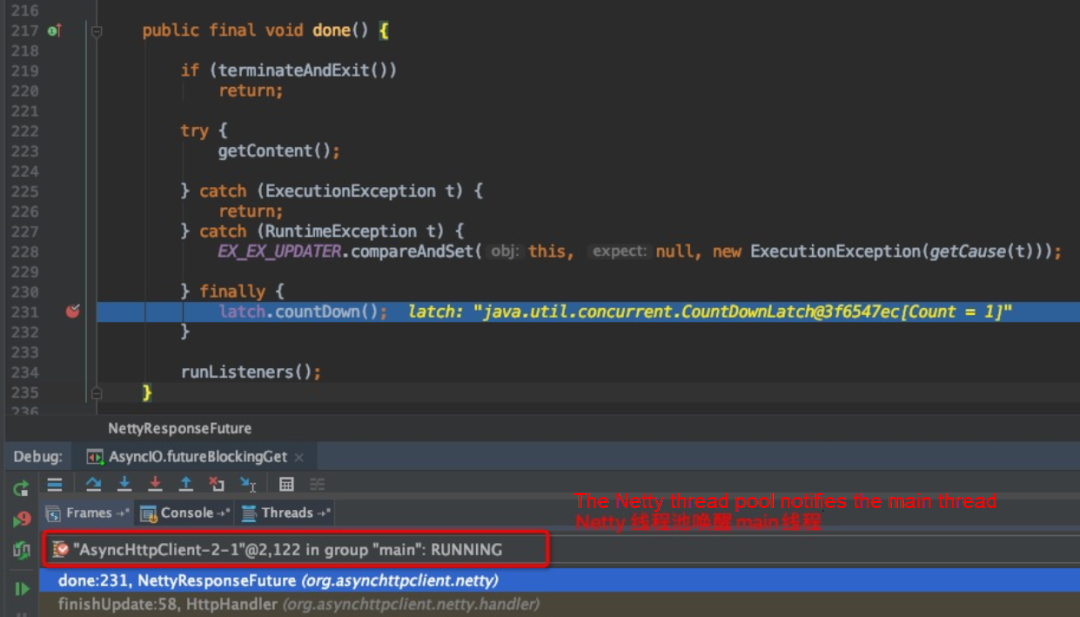
Generally, not all Futures are implemented in this way. For example, io.netty.util.concurrent. AbstractFuture is implemented through thread polling.
An advantage of this implementation is that the main thread can do other tasks without waiting for IO responses, such as sending another IO request which can be returned together with the IO responses:
"main"#1 prio=5 os_prio=31 tid=0x00007fd7a500b000 nid=0xe03 waiting on condition [0x000070000a95d000] java.lang.Thread.State: WAITING (parking)
at sun.misc.Unsafe.park(Native Method)
- parking to wait for <0x000000076ee2d768> (a java.util.concurrent.CountDownLatch$Sync)
at java.util.concurrent.locks.LockSupport.park(LockSupport.java:175)
at java.util.concurrent.locks.AbstractQueuedSynchronizer.parkAndCheckInterrupt(AbstractQueuedSynchronizer.java:836)
at java.util.concurrent.locks.AbstractQueuedSynchronizer.doAcquireSharedInterruptibly(AbstractQueuedSynchronizer.java:997)
at java.util.concurrent.locks.AbstractQueuedSynchronizer.acquireSharedInterruptibly(AbstractQueuedSynchronizer.java:1304)
at java.util.concurrent.CountDownLatch.await(CountDownLatch.java:231)
at org.asynchttpclient.netty.NettyResponseFuture.get(NettyResponseFuture.java:162)
at com.amap.aos.async.AsyncIO.futureBlockingGet(AsyncIO.java:201)
.....
"AsyncHttpClient-2-1"#11 prio=5 os_prio=31 tid=0x00007fd7a7247800 nid=0x340b runnable [0x000070000ba94000] java.lang.Thread.State: RUNNABLE
at sun.nio.ch.KQueueArrayWrapper.kevent0(Native Method)
at sun.nio.ch.KQueueArrayWrapper.poll(KQueueArrayWrapper.java:198)
at sun.nio.ch.KQueueSelectorImpl.doSelect(KQueueSelectorImpl.java:117)
at sun.nio.ch.SelectorImpl.lockAndDoSelect(SelectorImpl.java:86)
- locked <0x000000076eb00ef0> (a io.netty.channel.nio.SelectedSelectionKeySet)
- locked <0x000000076eb00f10> (a java.util.Collections$UnmodifiableSet)
- locked <0x000000076eb00ea0> (a sun.nio.ch.KQueueSelectorImpl)
at sun.nio.ch.SelectorImpl.select(SelectorImpl.java:97)
at io.netty.channel.nio.NioEventLoop.select(NioEventLoop.java:693)
at io.netty.channel.nio.NioEventLoop.run(NioEventLoop.java:353)
at io.netty.util.concurrent.SingleThreadEventExecutor$2.run(SingleThreadEventExecutor.java:140)
at io.netty.util.concurrent.DefaultThreadFactory$DefaultRunnableDecorator.run(DefaultThreadFactory.java:144)
at java.lang.Thread.run(Thread.java:748)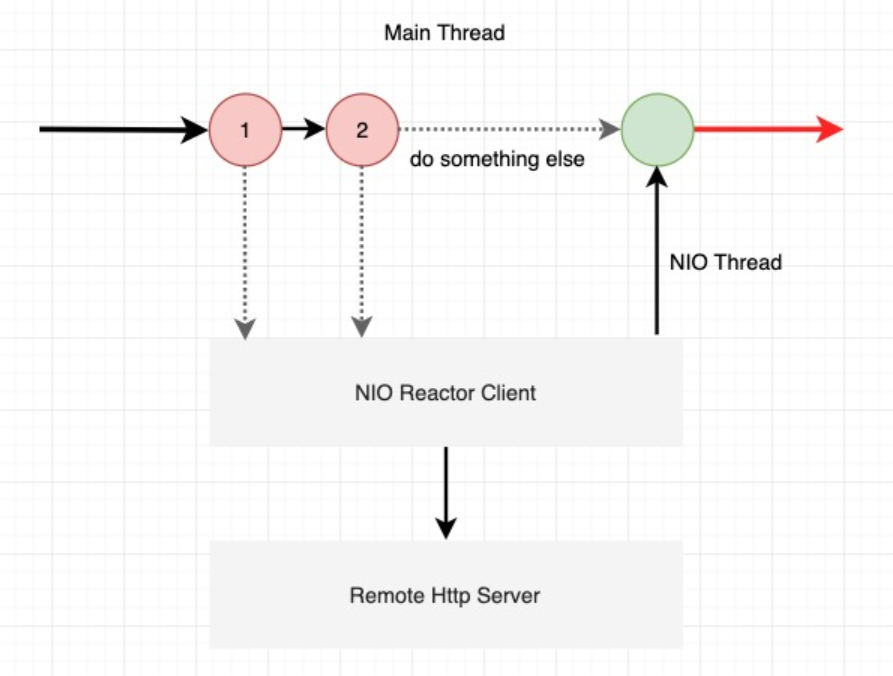
However, the main thread still needs to wait until the results are returned. This problem is not fundamentally resolved.
In the second section, the main thread still needs to await the results. So, is it possible to execute other logic without paying attention to the logic after the request is sent in the main thread? The answer is yes, by using the Callback mechanism.
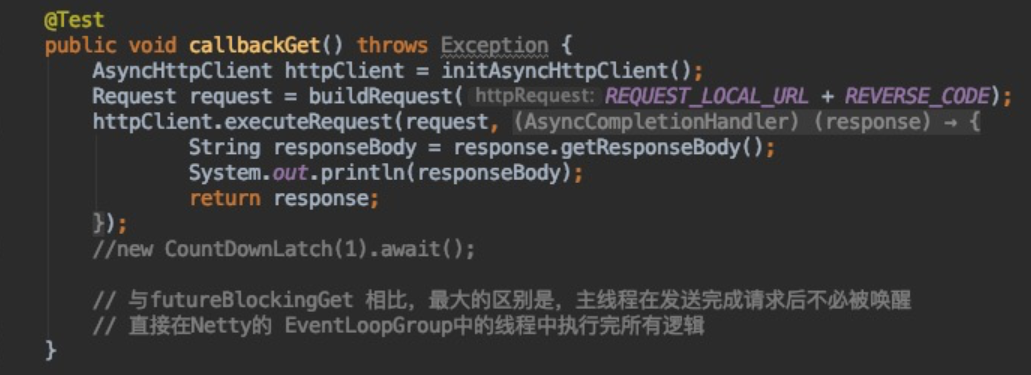
As shown in the above figure, the main thread no longer needs to pay attention to the business logic after initiating IO. After sending the request, the main thread can complete other tasks or return to the thread pool for scheduling. If it is HttpServer, it is necessary to combine the asynchronous Servlet of Servlet 3.1.
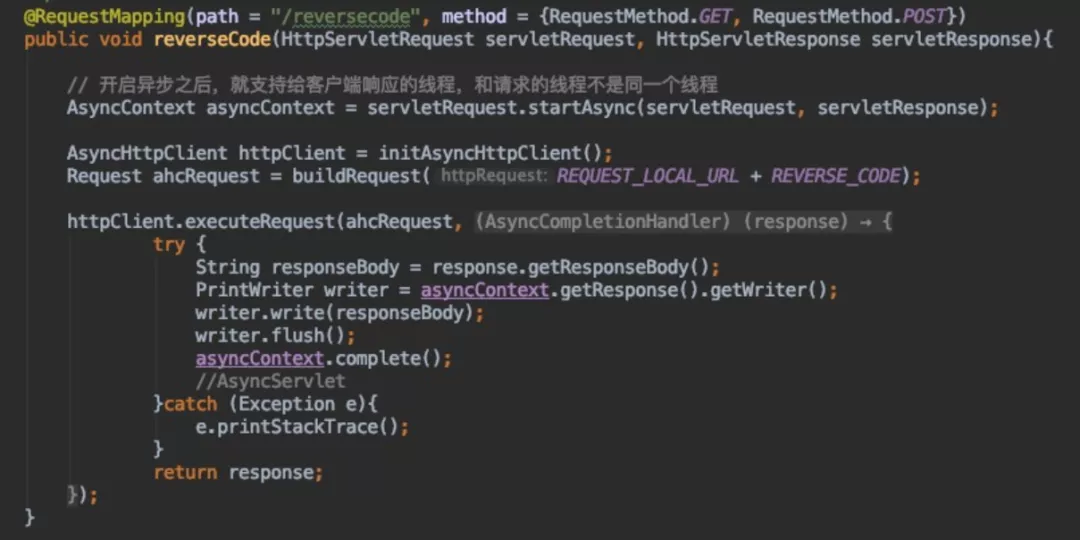
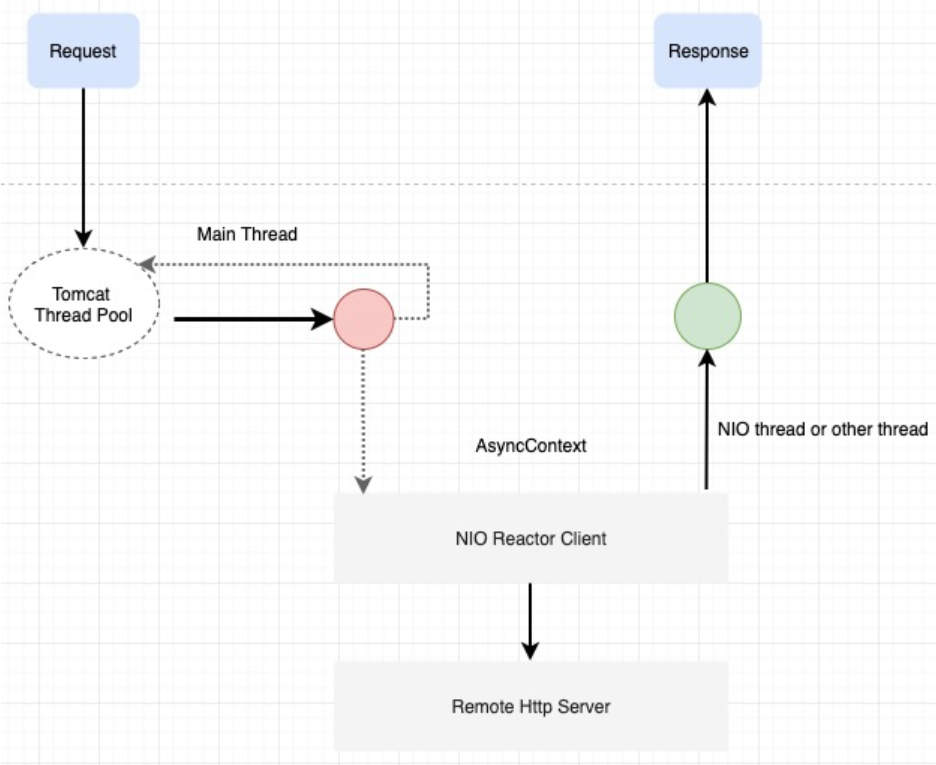
For more information about asynchronous Servlet, refer https://www.cnblogs.com/davenkin/p/async-servlet.html
With the Callback method, you can see in the thread model that the thread resources have been utilized fully, and there is no thread blocking during the whole process.
The Callback hell mode is enabled when the Callback thread is about to perform the next IO call.
Take a typical scenario as an example. The reverse geographical interface of the administrative region - adcode - is obtained through the longitude and latitude. Then, you can obtain the local weather information through the adcode.
Such problems basically don’t arise in the synchronous programming model.
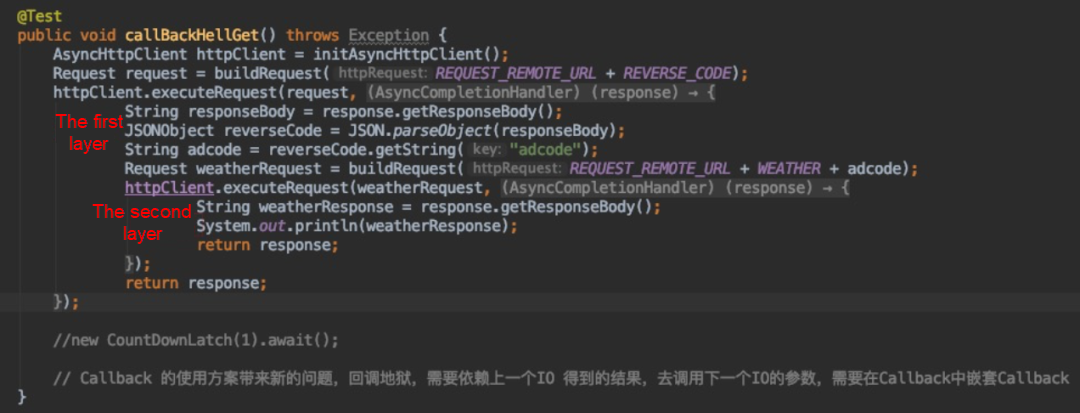
Fig: Core defects of the Callback method
Are there any solutions for the Callback hell problem? The answer is CompletableFuture, which is supported in JDK 1.8. The following part illustrates how it solves this problem.
The reverse geographical Callback logic is encapsulated into an independent CompletableFuture. When the asynchronous thread is called back, future.complete(T) is called to encapsulate the result.

The Call logic executed by weather is encapsulated into an independent CompletableFuture. After the procedure, the logic is the same as above.

Compose indicates join and whenComplete displays output:
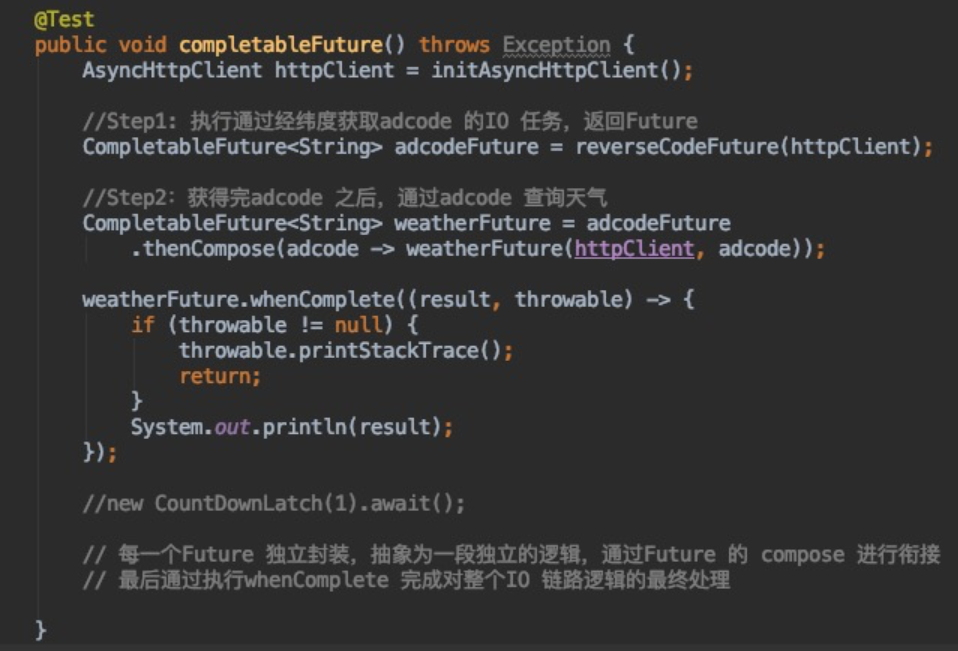
You can encapsulate each IO operation as an independent CompletableFuture to avoid the Callback hell problem.
CompletableFuture has only two attributes:
How is the weatherFuture method called?
The stack shows that the obtained adcode is used as a parameter to execute the following logic when reverseCOdeFuture.complete(result) is executed.
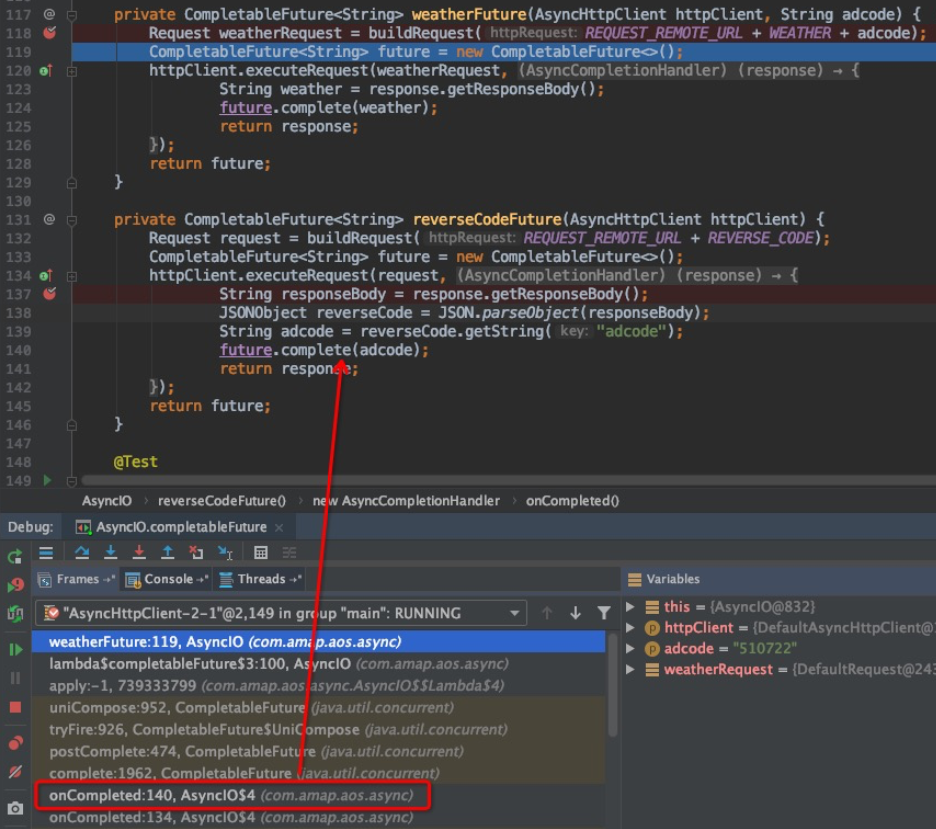
This solution solves the Callback hell problem perfectly. It looks like the synchronous coding in the main logic.
The Info-Service that uses a large number of Vert.x Future methods is a similar solution, but it is designed based on a Handler concept.
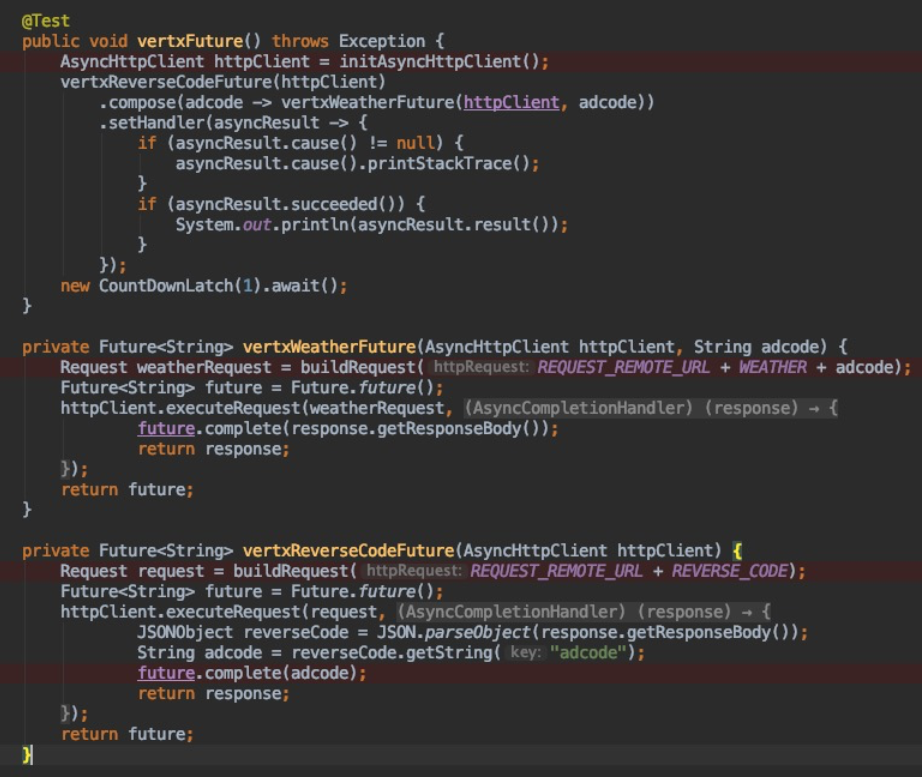
The core execution logic is similar:
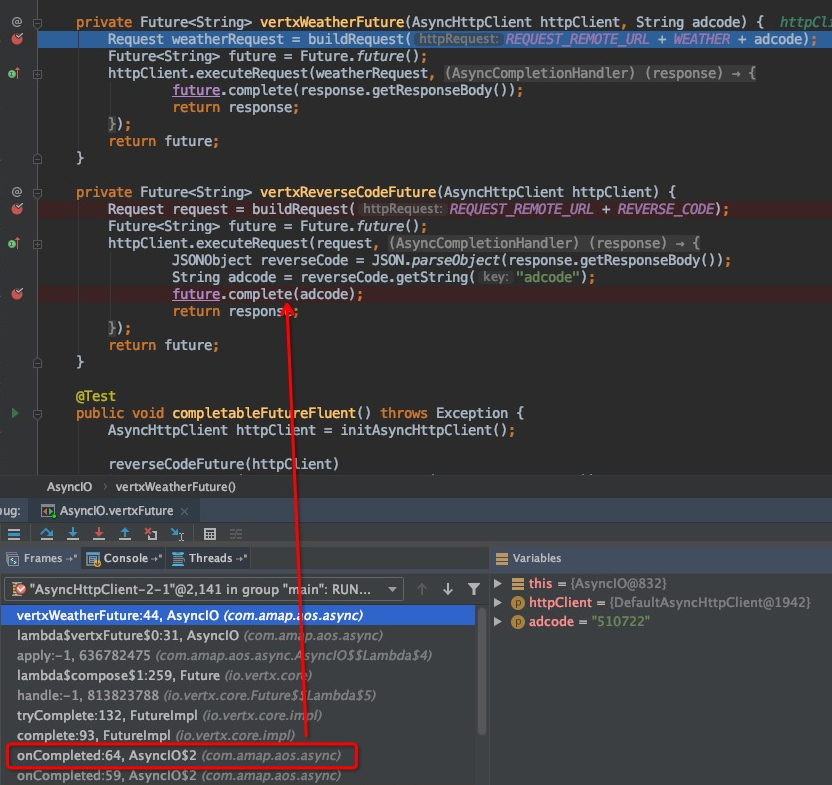
Of course, this is not what the Vert.x is all about. However, we don’t provide more details here.
Asynchronous programming is good for throughput and resource utilization. But, is there a unified abstraction to solve this kind of problem? The answer is Reactive Streams.
Core abstraction: In the entire package, there are only four interfaces - Publisher, Subscriber, Processor, and Subscription - without one for implementation.
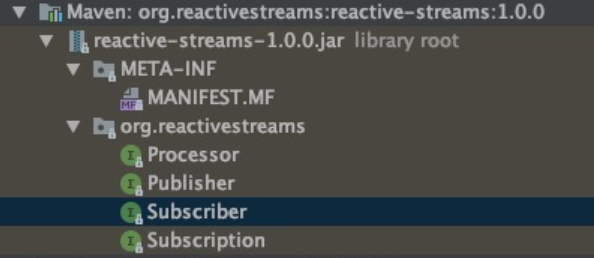
In JDK 9, they have been encapsulated as a specification in java.util.concurrent.Flow:
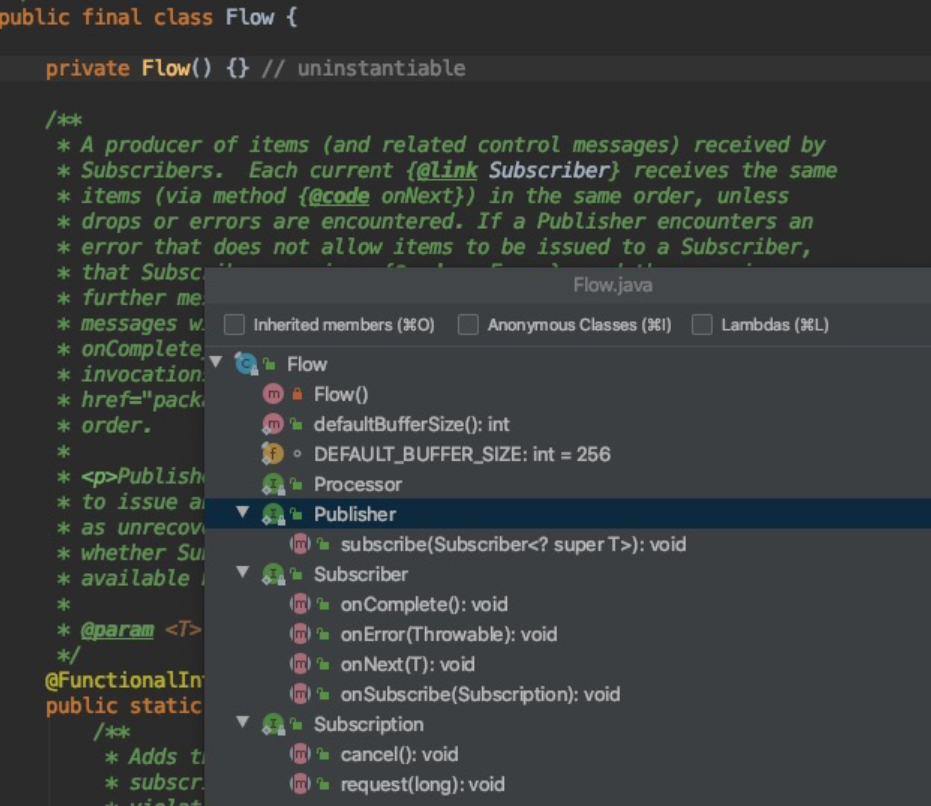
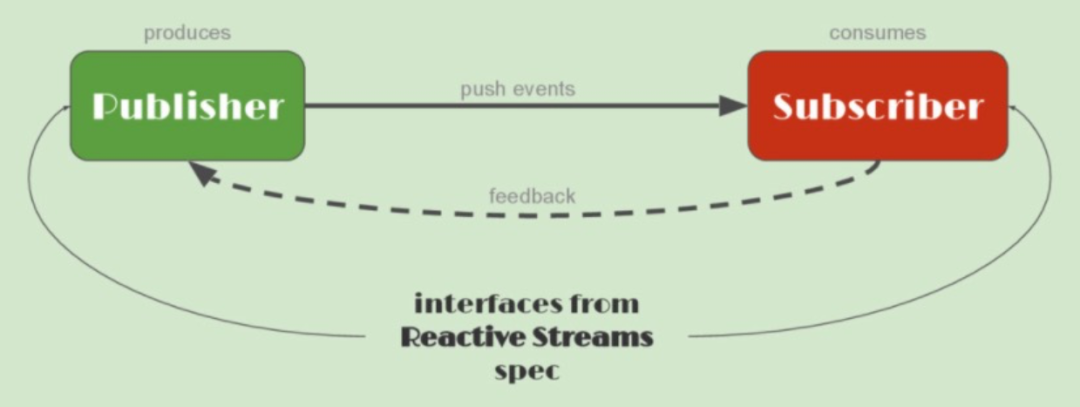
The following is a simple example:
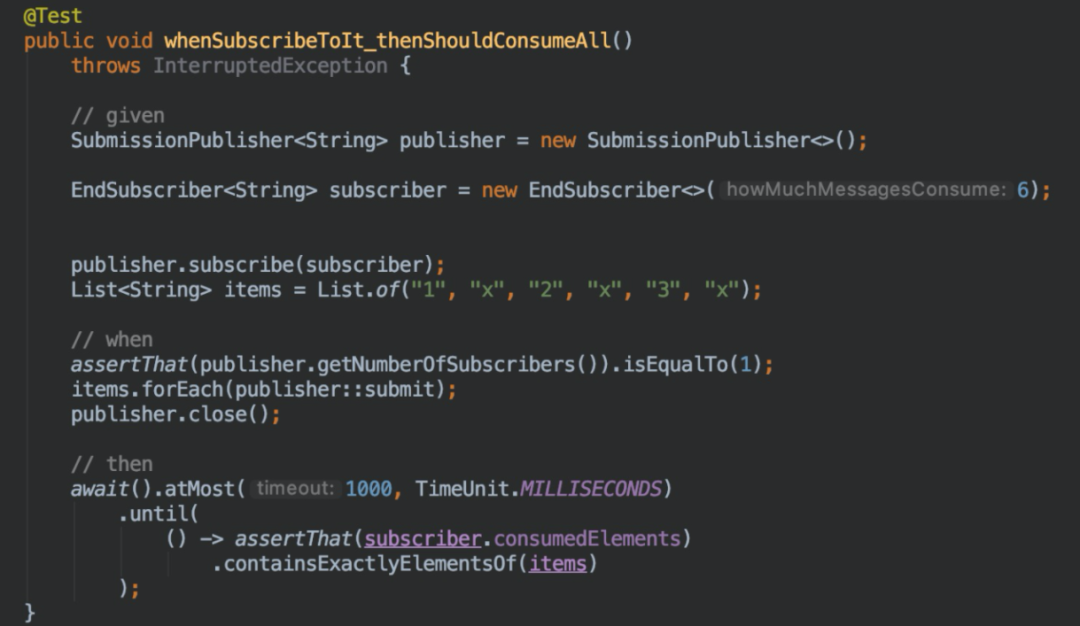
Flux and Mono:
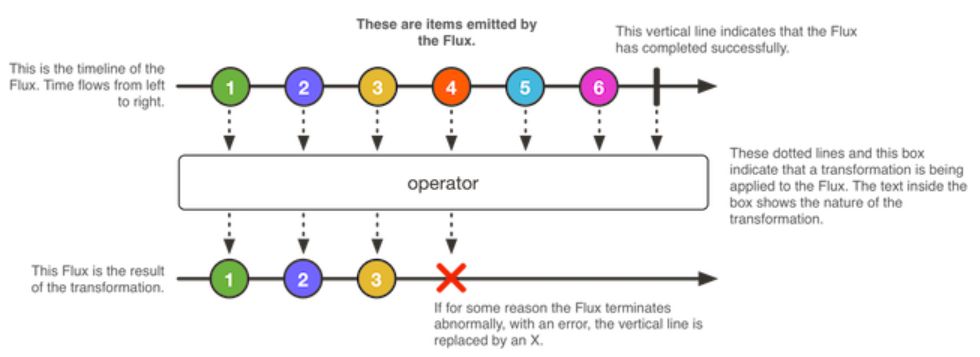
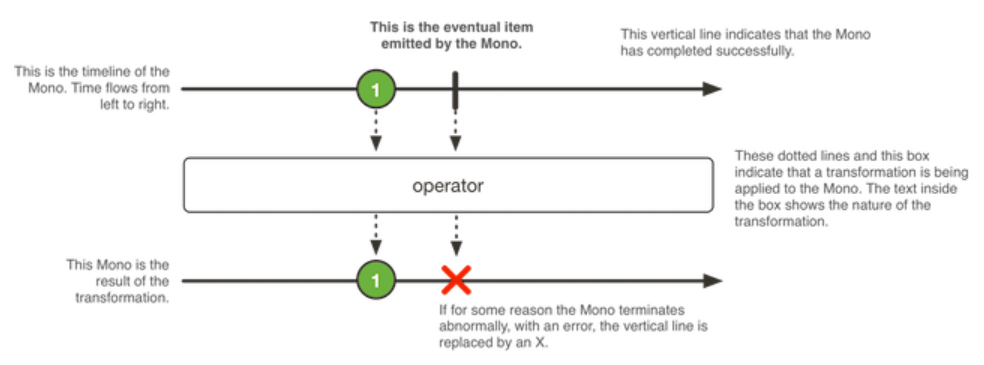
Alibaba Clouder - February 2, 2021
XianYu Tech - December 27, 2021
Alibaba Clouder - April 13, 2020
Alibaba Cloud Native Community - August 23, 2023
Alibaba Cloud Community - December 16, 2024
frank.li - February 24, 2021
 Web Hosting Solution
Web Hosting Solution
Explore Web Hosting solutions that can power your personal website or empower your online business.
Learn More YiDA Low-code Development Platform
YiDA Low-code Development Platform
A low-code development platform to make work easier
Learn More mPaaS
mPaaS
Help enterprises build high-quality, stable mobile apps
Learn More Web Hosting
Web Hosting
Explore how our Web Hosting solutions help small and medium sized companies power their websites and online businesses.
Learn More